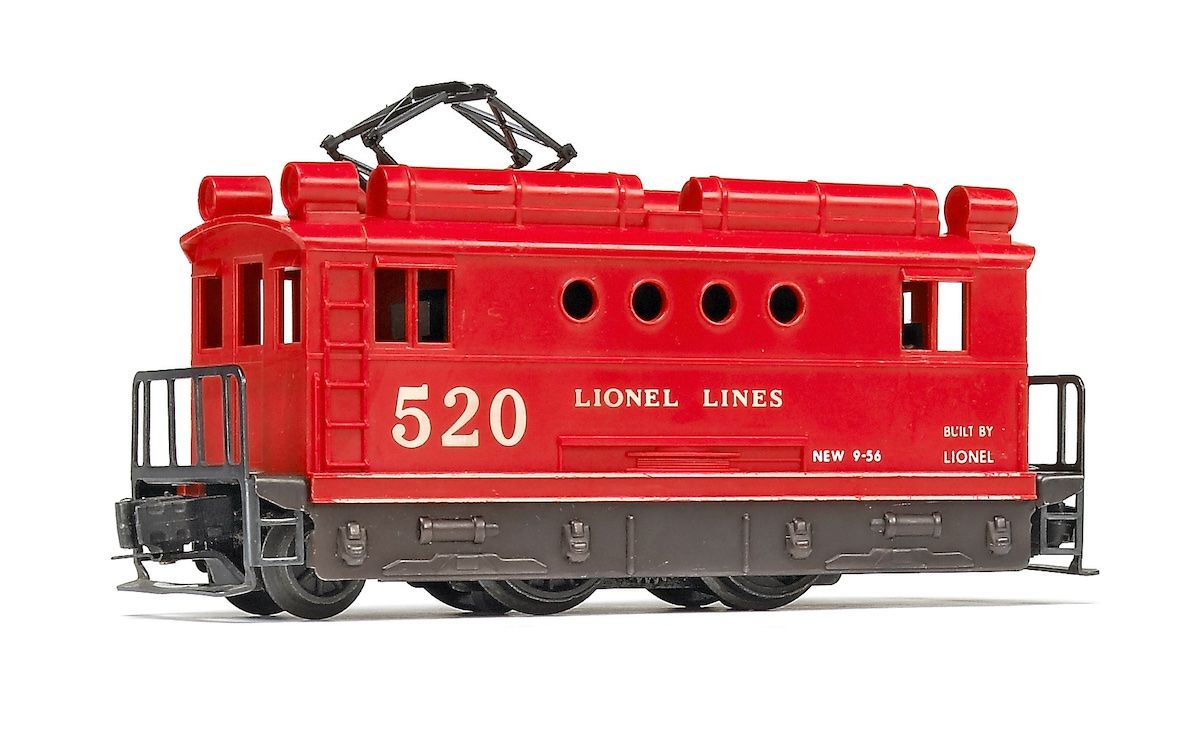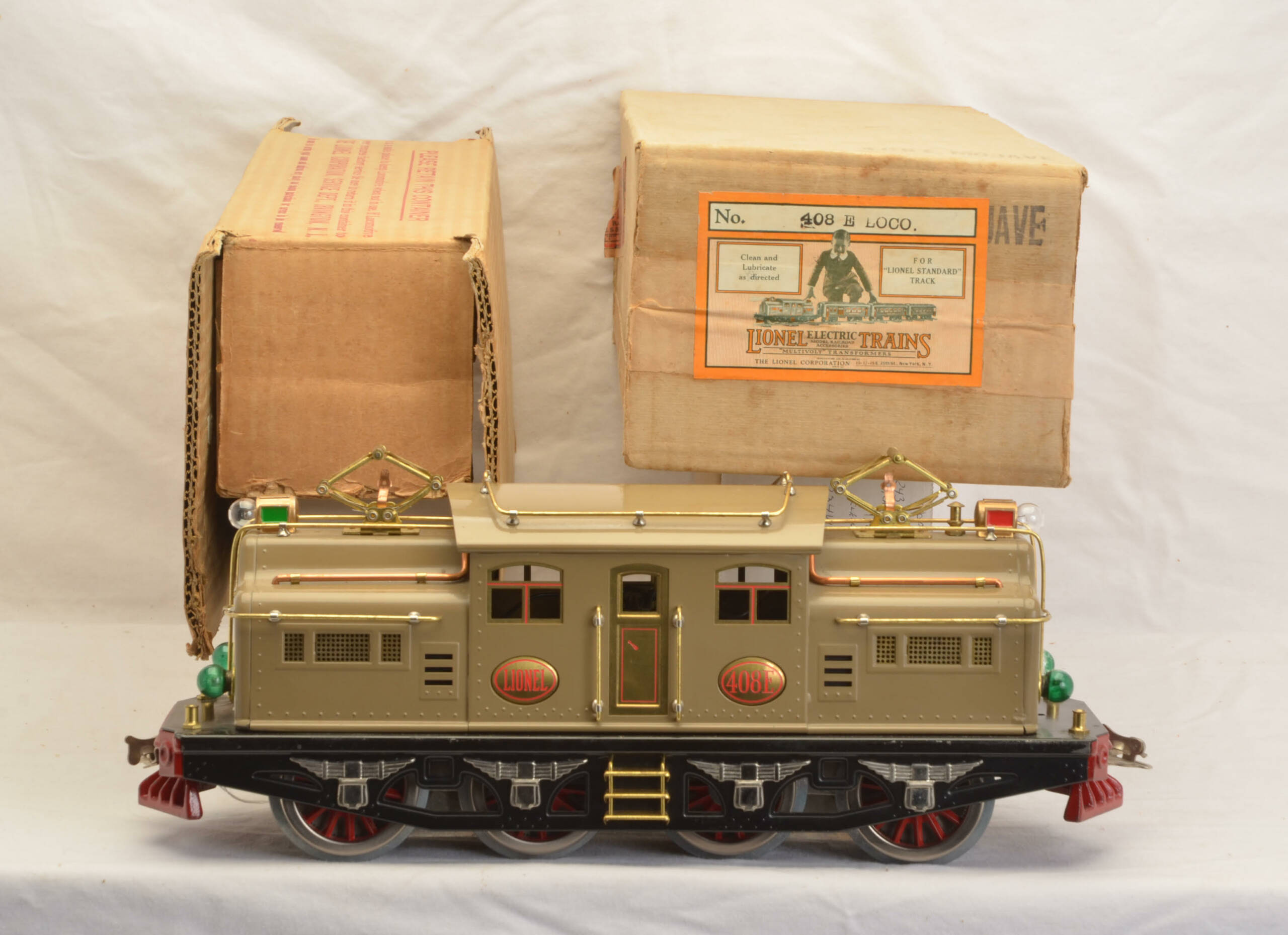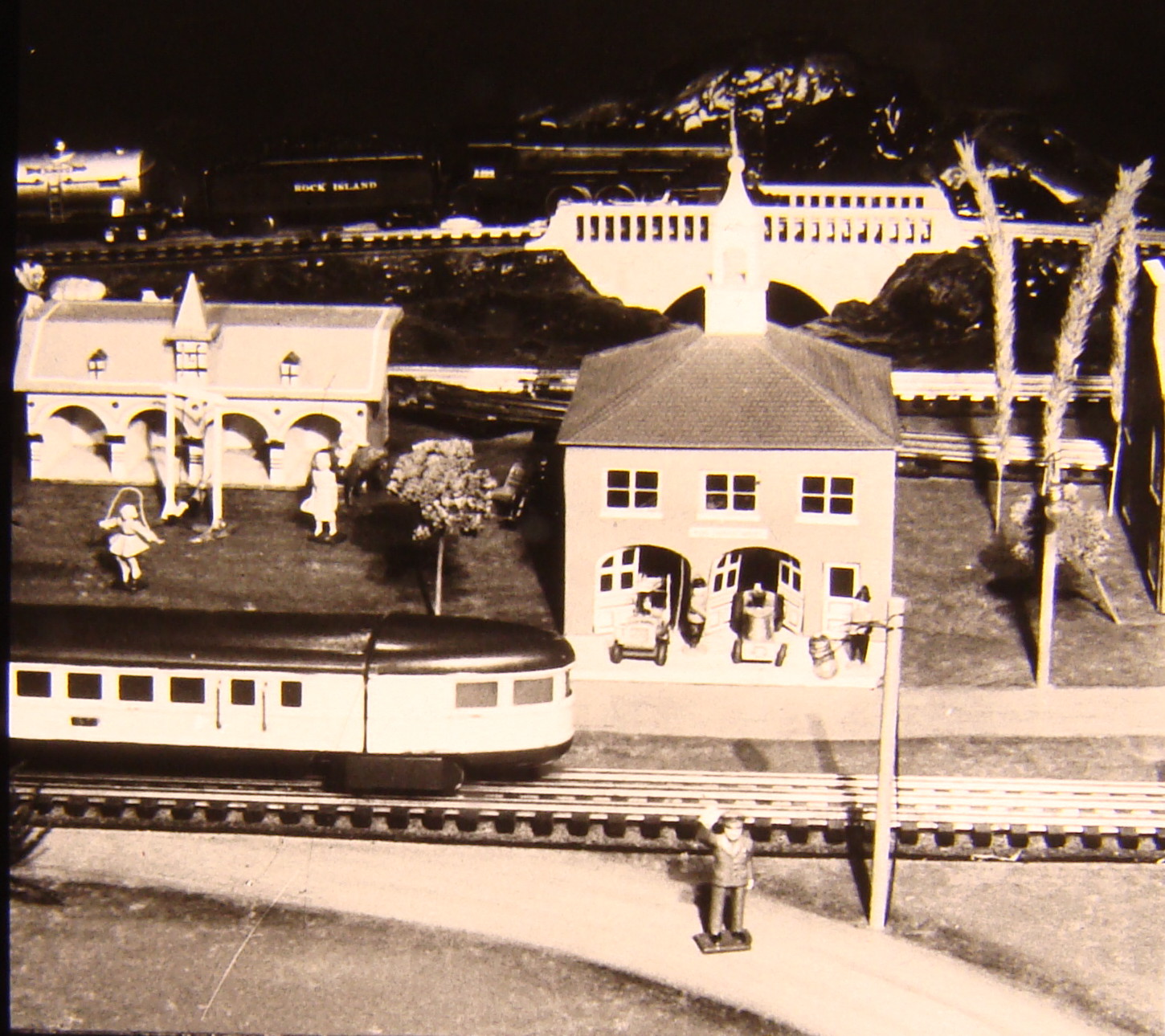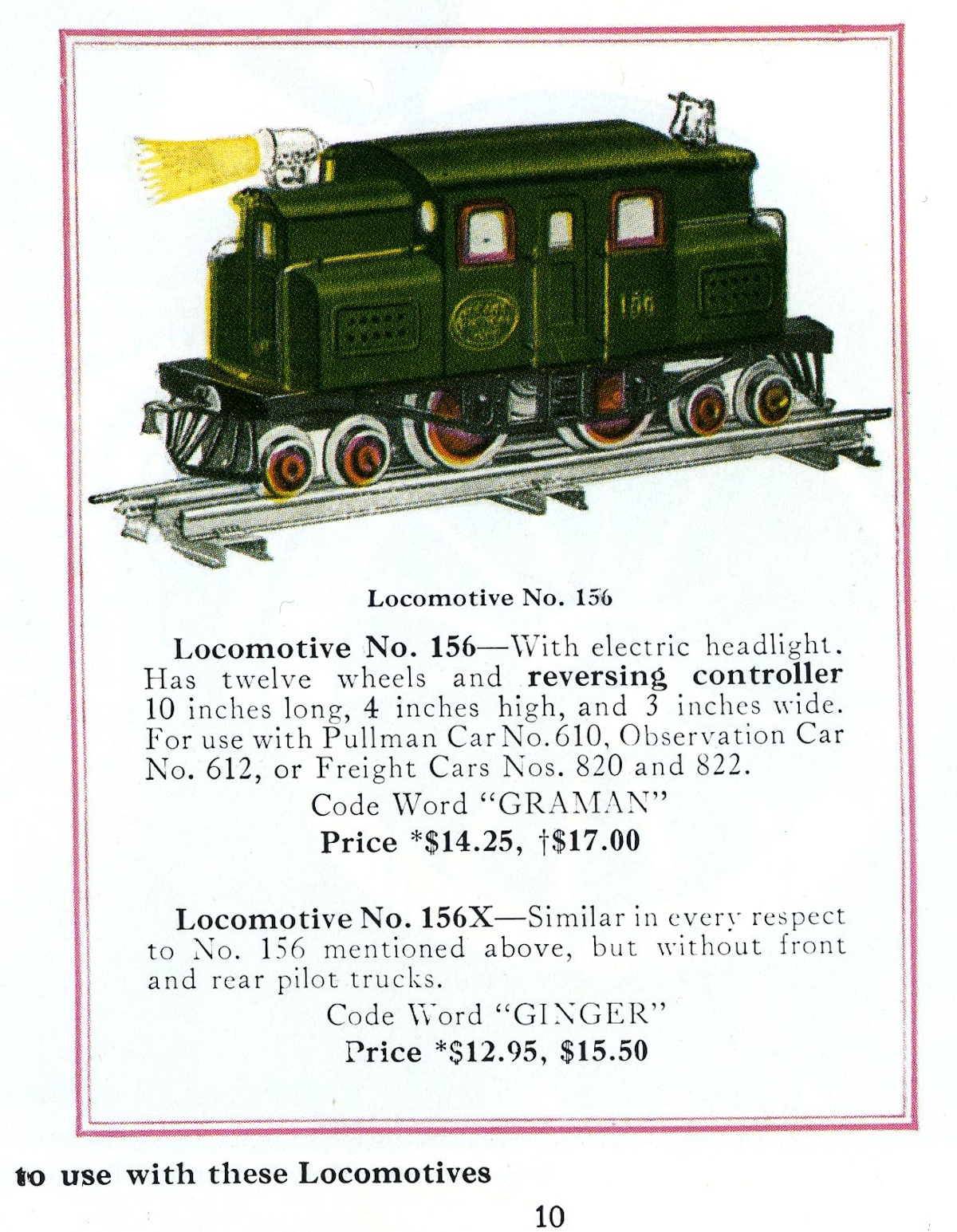These 7 great Lionel accessories from the prewar and postwar periods are the ones we think are the tops.
This “best of” list is based on quality design, sturdy construction, and general appeal. Don’t agree with our list? Drop us a line at editor@ClassicToyTrains.com, and thanks for reading.
There’s more information on many of these items and more in the book Collectible Lionel Classics.
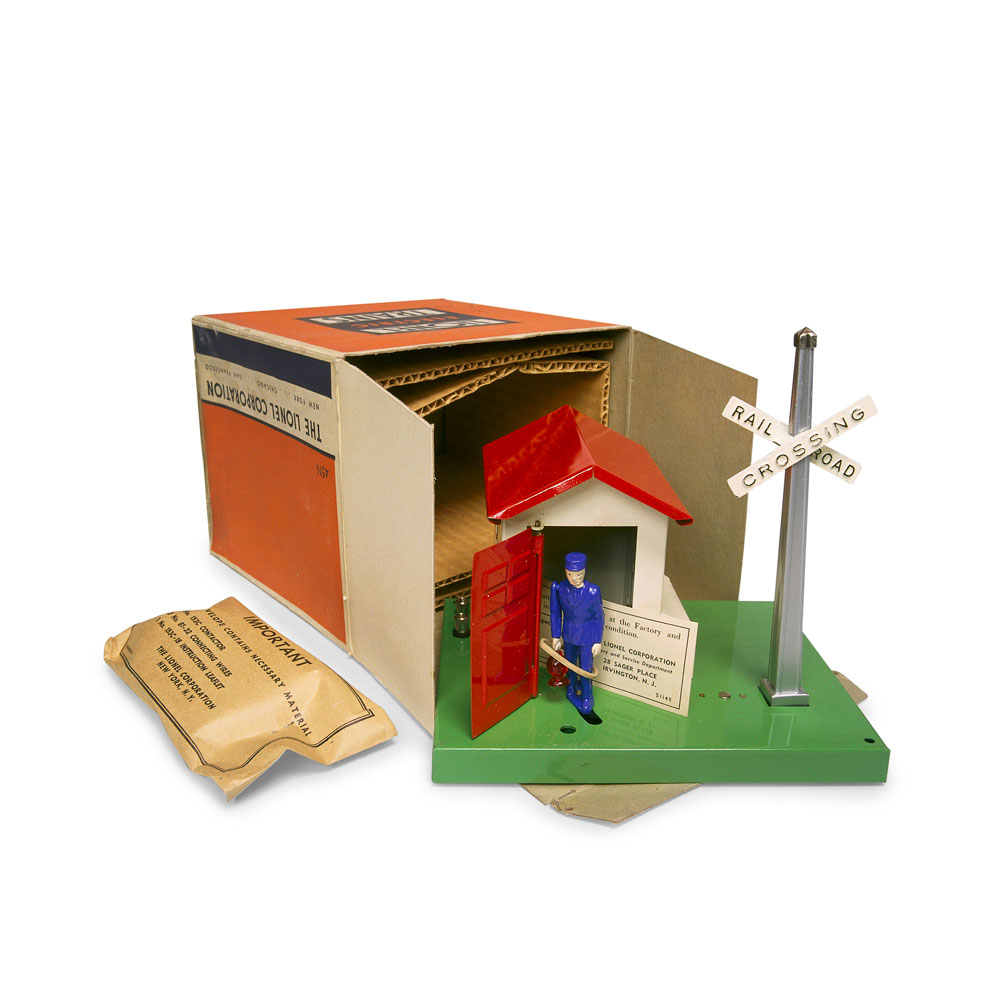
No. 1: The champ
No. 45 gateman, 1935-42 and 1945-49 (above)
No. 145 gateman, 1950-66 (not shown)
If we could pick only one for our list of 7 great Lionel accessories from its golden years, the automatic gateman would be it. The gateman is the most enduring and popular toy train accessory ever. A part of the Lionel line for more than 70 years, Lionel’s gateman was still going strong after all the real railroad gatemen were retired or reassigned. Simple, affordable, and reliable, the automatic gateman had it all.
Other toy train manufacturers – Colber, Gilbert, Marx – had their own versions of the gateman, each carefully circumventing Lionel’s patents. Even the Soviet-era Russians copied it. They saw more room for flexibility when it came to intellectual property (or personal property, for that matter), so their version was almost a direct copy. The main difference was that their gateman wore a heavy overcoat. (Hey, it gets pretty &!$@# cold in Murmansk!) No one at Lionel challenged them, perhaps out of fear that a Soviet ICBM might “accidentally” hit Irvington, N.J.
Although the mechanisms of the nos. 45 and 145 are different, both are nearly trouble-free. Regardless of version, the gateman is a toy train icon on the order of the Hudson or the Santa Fe F3.
Get CTT’s Senior Editor Roger Carp’s take on this accessory here.
No. 2: The element of danger
No. 313 bascule bridge, 1940-42 and 1946-49
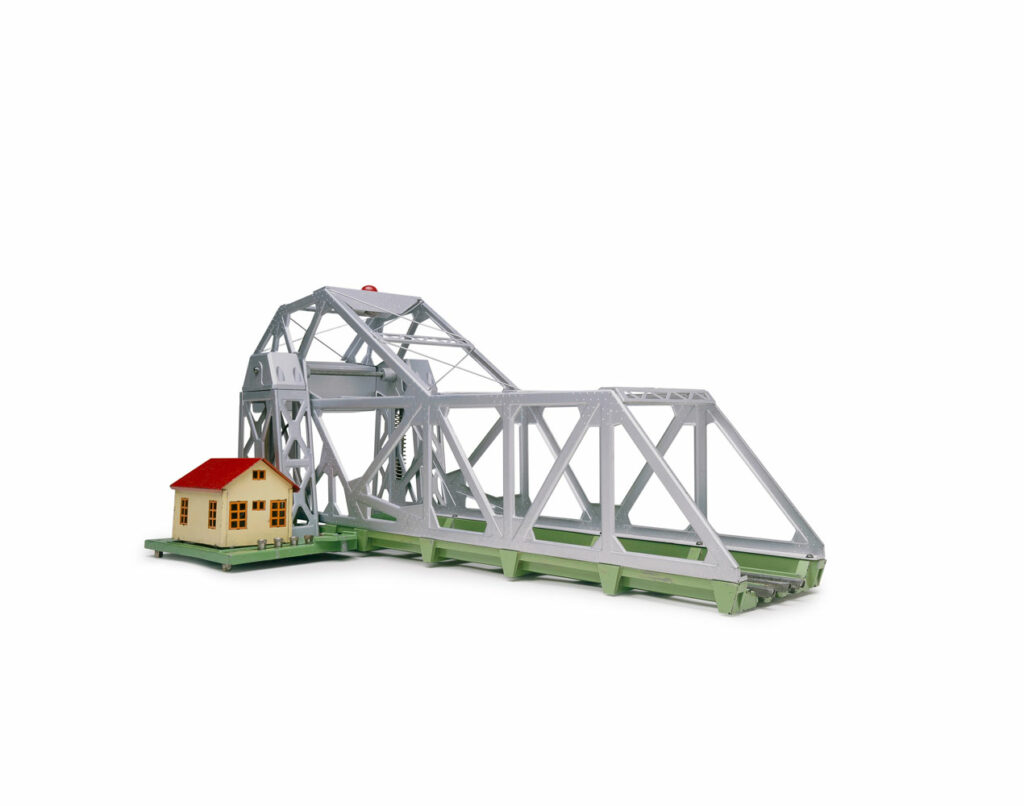
Always a crowd-pleaser, the bascule bridge is a real feat of toy train engineering. It looks good, operates at a realistically slow speed, and makes a lot of racket, just like the prototype. The motor strains to lift the heavy bridge, groaning and clattering throughout. (Lowering the bridge is easier, of course.) The no. 313 is one of a select group of accessories with motors built using the same quality construction as Lionel’s nearly indestructible locomotives. Just like their locomotive counterparts, virtually all these accessories still work.
Trains approaching the bridge from either direction stop automatically if the bridge is up. They remain safely immobile until the bridge is firmly in place again. (Of course, you can back a train into the chasm . . . .) The red warning light on the bridge came wired so it was always lit, but clever operators could set it to glow only when the bridge was up by moving one wire. Many operators did.
The superstructure is made of heavy stamped steel painted aluminum (save for a few wartime gray bridges). The bed is green Bakelite, and the die-cast metal base of the tower is painted green.
The 313 came with a heavy steel frame that kept the track aligned if you used your bridge on a temporary layout. However, the bascule bridge looks and operates best when installed on a permanent layout.
No. 3: Loud and fun
No. 397 diesel coal loader, 1948-57
No. 456 coal ramp, 1950-55 (not shown)
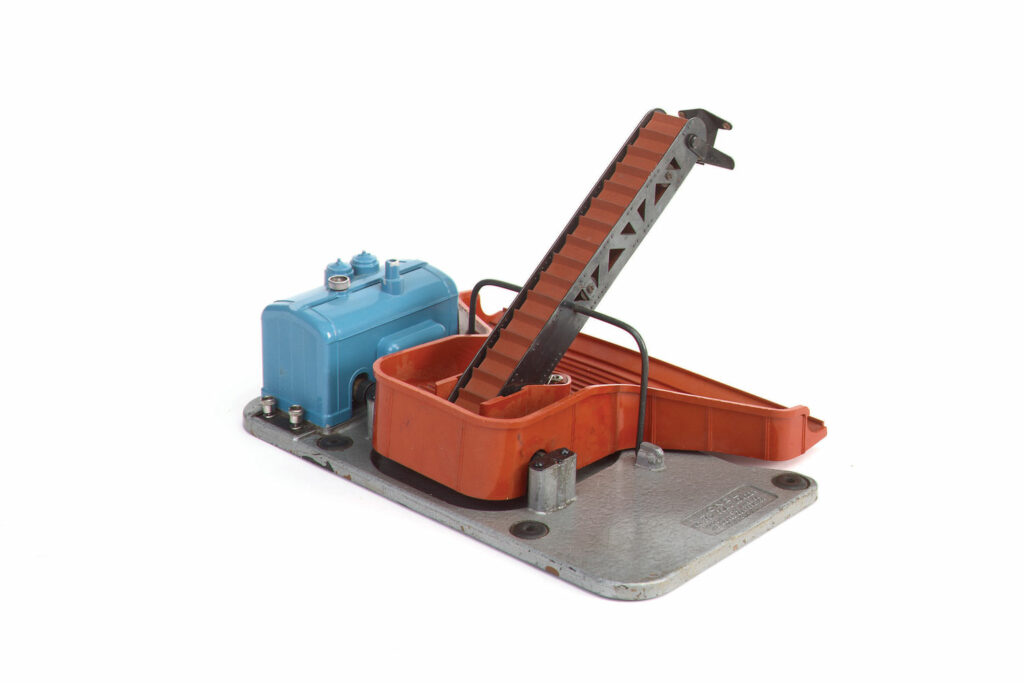
Lionel made this pair of accessories to work together, but both are fun on their own. They were great replacements for the impressively large yet barely functional no. 97 coal elevator. The nos. 397 and 456 moved (and spilled!) coal at a rapid rate, much to the delight of children and the consternation
of mothers.
The heavy-duty motor inside the 397’s simulated diesel keeps the coal moving up the toothed rubber belt until most of it (OK, some of it) lands in the waiting hopper, gondola, or dump car. Many operators load the accessory by dumping coal into the front of the 397’s bin, but you can load it from a hopper on the 456 by using the chute Lionel supplied for this purpose.
The impressively long 456 came with a special operating hopper car, the no. 3456. The car features hopper doors that open when activated by the electromagnet built into the 456. By using a few other cars as idlers, a locomotive can push the loaded hopper up the three-foot ramp. Once the car is at the top, a knuckle coupler on the 456 holds it in place until an operator unloads the car. After that, the operator can release the car to roll down the ramp and into the freight yard. The operation is reliable, realistic, fun, and messy, much to the glee of the young Lionel engineers fortunate enough to own both accessories.
No. 4: Curious and captivating
No. 497 coaling station, 1953-58
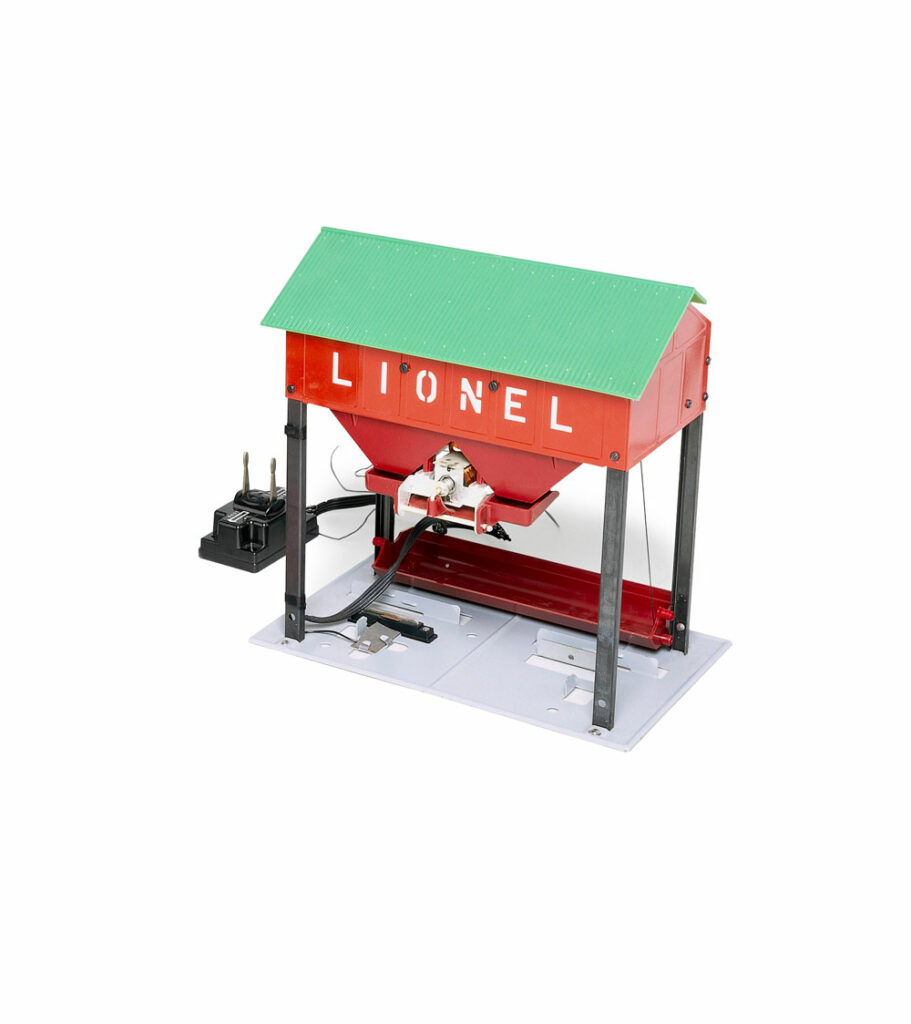
The large and colorful no. 497 duplicates the basic operation of the no. 397 but in a completely different way. With the 497, a dump car spills its load of coal into a trackside bin. A clever system of a motor and pulleys then lifts the bin to the top of the red-painted sheet-metal storage hopper and dumps it in. The coal remains in the bin until an operator pushes the button that energizes the solenoid-powered hopper doors, at which point the coal drops into a waiting hopper, dump, or gondola car. The 497 is very reliable unless you lift the bin too far, at which point the cables wrap themselves around the shaft in the opposite direction and “down” on your controller becomes “up.”
Where the 397 was more typical of something you’d see at a coal dealer, the 497 was similar to a mainline coaling station. Sadly, all Lionel tenders were molded with the coal pile in place, so there was no way to add it a steam locomotive. Instead, most operators ended up reloading the coal into the same dump car that had delivered it. Quieter and less messy than the 397, the 497 remains a favorite of operators to this day.
No. 5: The lone station
No. 356 operating freight station, 1952-57
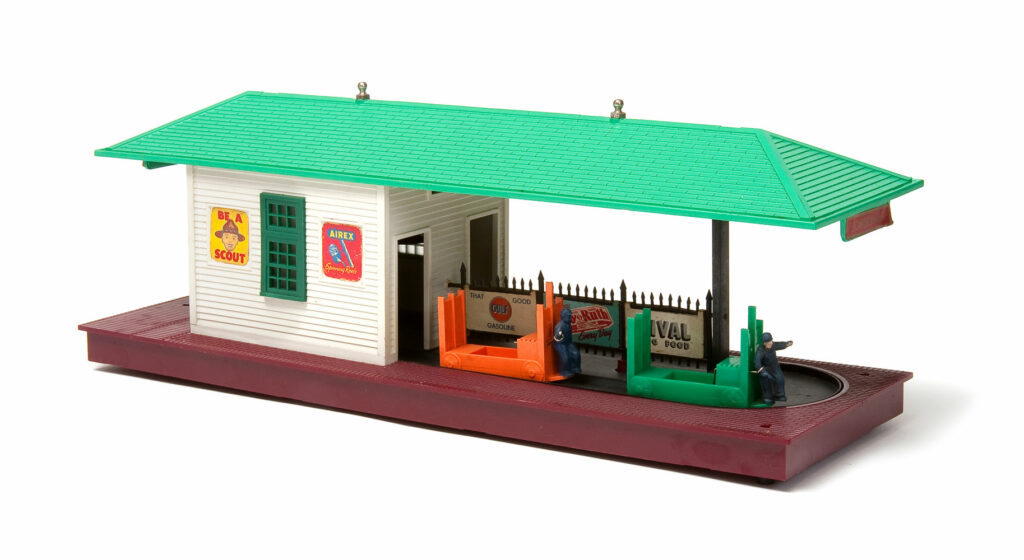
The only vibrating accessory on our list is also the only one of Lionel’s operating stations to let operators see what’s happening. On the no. 356, an electrical coil causes a metal track to vibrate. That, in turn, causes two small plastic baggage carts (each with a blue rubber figure) to move in and out of the station.
The station is the same basic, yet well-proportioned structure used for the nos. 256 freight station and 257 diesel horn station, and it fits easily between two parallel straight tracks. Overall, the 356 is simple yet reliable, as long as you keep the voltage high enough so the carts move but not so high that they vibrate right off the station.
No. 6: The ‘What if’ award
No. 47 double crossing gate, 1937-42
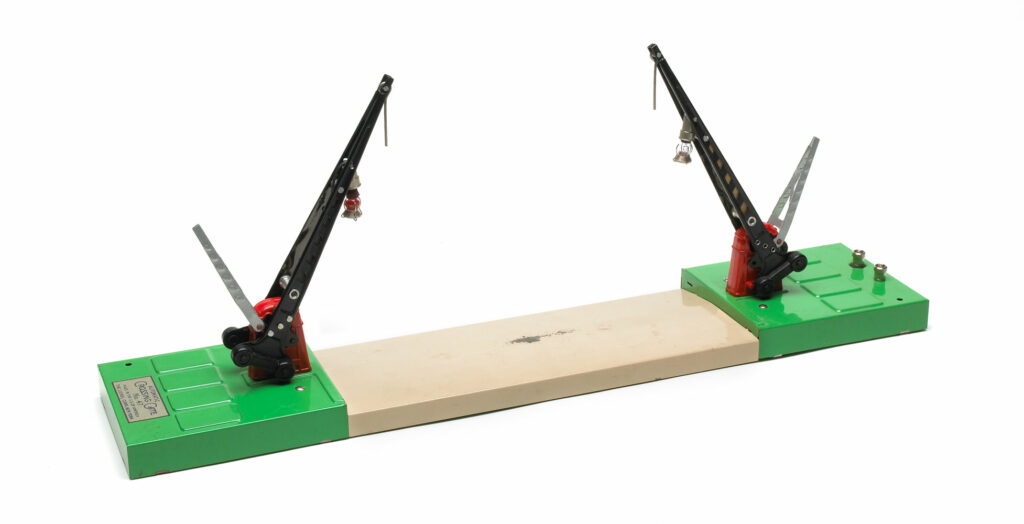
It’s difficult to understand why this absolute gem of an accessory didn’t return to the line after World War II – it would have been a great fit there. Instead, Lionel decided to stick with the no. 152 (and later no. 252), both of which were far out of proportion, too big even for Standard gauge.
The no. 47 entered the line the same year as the scale Hudson, the latter of which heralded an emphasis on realism. The products of that era included scale, semi-scale, and scale-detailed locomotives and rolling stock, die-cast metal boilers and tender shells, and a more subdued palette. The well-proportioned 47 was a natural extension of that group.
The 47 has two black-and-white gates with attached pedestrian gates mounted on a 16-inch-wide green-and-ivory stamped-steel base. Its most delightful feature was the two miniature red light bulbs mounted in two pivoting sockets. With their metal cages, the bulbs look like railroad lanterns.
Beginning in 1939, Lionel also offered the no. 46, a single-gate version of the 47. It didn’t survive the war either.
No. 7 Most fun to operate
No. 165 triple-action magnet crane, 1940-42
No. 182 triple-action magnet crane, 1946-49 (not shown)
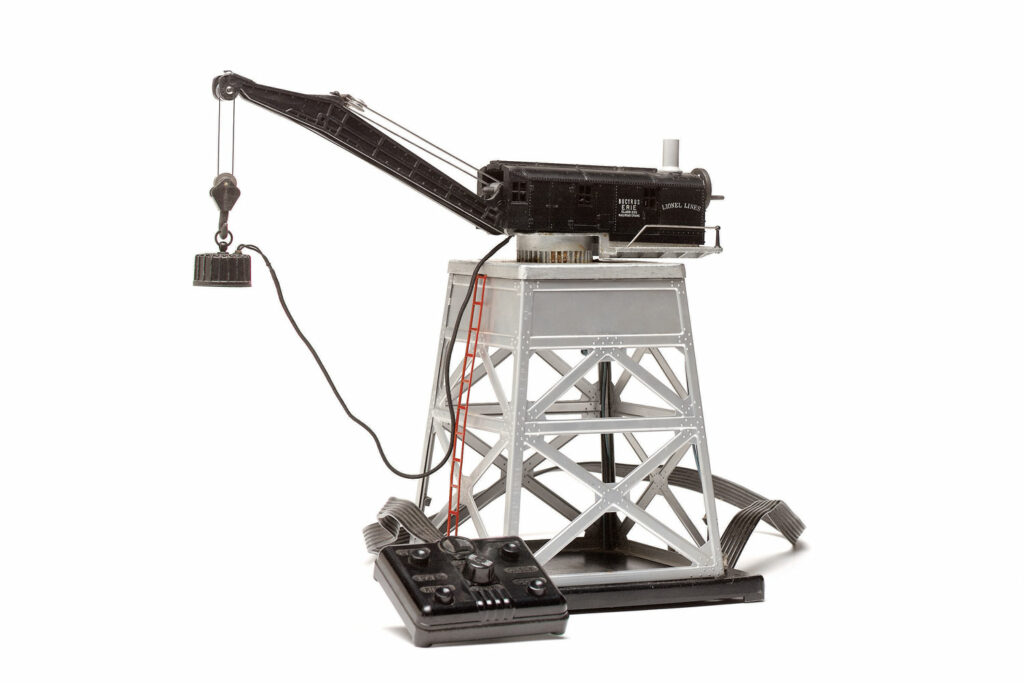
The magnet cranes are undoubtedly the most engaging accessories Lionel ever made. They have a purpose, function well, require skill to operate, and keep a young (or adult, for that matter) Lionel railroader occupied for hours.
For all practical purposes the nos. 165 and 182 are identical; the only differences are in the cabs and the booms. Both used modified parts from the crane cars of their era.
The engineering on the cranes is rock-solid, typical of Lionel products of the era. The frame for the crane is heavy, die-cast metal. Two solenoids engage the two clutches (one for right-left movement and one for up-down), the gears are brass, and the strong motor is shared with the OO scale Hudson. A red light in the cab indicates when the magnet is energized, and the controller has four buttons and a switch. (The later no. 282 portal gantry crane has only one solenoid and suffers from an attempt at economizing.)
With 360-degree rotation and a strong magnet, the crane was more than strong enough to lift the “scrap steel” (junk pieces from Lionel’s tubular track tie-making process) that came with it. With the magnet removed from its hook, it could lift non-magnetic objects. The “Bucyrus Erie” name on the magnet case added an extra touch of realism. The 165/182 version of the magnet crane is a class act, all the way.






